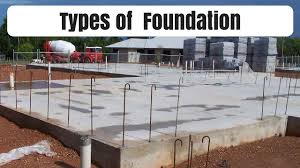“7 Reasons Why the Civil Engineering Companies in Middle East Are Revolutionizing Infrastructure”

Introduction
The Middle East is rapidly becoming a global leader in infrastructure development. Civil engineering companies in the region are spearheading groundbreaking projects that are reshaping the landscape. From towering skyscrapers to cutting-edge transportation systems, the Middle East is a hub of innovation and ambition in the world of civil engineering. Below, we explore the top seven reasons why Middle Eastern civil engineering companies are revolutionizing infrastructure on a global scale.
1. Unparalleled Investment in Infrastructure
-
Scale of Investment:
- The Middle East has seen tremendous financial investment in infrastructure, with countries like the UAE, Saudi Arabia, and Qatar leading the charge.
- Billions of dollars are being allocated to modern cities, transportation networks, and energy projects, enabling civil engineering companies to push boundaries.
-
Vision 2030 and Beyond:
- Initiatives like Saudi Arabia’s Vision 2030 are driving massive infrastructure projects focused on diversifying economies and reducing oil dependency.
- Projects include the development of smart cities, renewable energy, and advanced transportation systems.
-
Global Impact:
- The scale of these investments is transforming the Middle East and influencing global infrastructure trends.
- Middle Eastern companies are exporting their expertise, making a significant impact on global infrastructure.
2. Adoption of Cutting-Edge Technologies
-
Embracing Digital Transformation:
- Middle Eastern civil engineering companies are at the forefront of digital transformation in construction.
- Technologies like Building Information Modeling (BIM), drones, and AI are being used to enhance project efficiency, reduce costs, and improve safety.
-
Advanced Construction Techniques:
- The region leads in adopting techniques such as 3D printing and prefabrication.
- These methods enable faster project completion, reduce waste, and allow for more complex designs.
- Example: Dubai’s 3D-printed office building.
-
Sustainability through Technology:
- Technology is helping design and build eco-friendly infrastructure.
- The region is focusing on energy-efficient buildings, sustainable transportation systems, renewable energy sources, and smart grid technology.
3.Civil Engineering Companies in Middle East – Mega Projects That Redefine Possibilities
-
Iconic Skyscrapers:
- The Middle East is home to iconic skyscrapers like the Burj Khalifa in Dubai and the Kingdom Tower in Saudi Arabia.
- These projects showcase engineering marvels that overcome challenges such as extreme weather and seismic activity.
-
Ambitious Urban Developments:
- Cities like Dubai, Abu Dhabi, and Doha have undergone rapid transformation with modern infrastructure, world-class airports, public transportation, and luxury residential complexes.
-
World-Class Transportation Infrastructure:
- The region boasts some of the most advanced airports, seaports, and road networks in the world.
- Projects like the Dubai Metro and Riyadh Metro are examples of revolutionary urban mobility.
- Investment in high-speed rail and hyperloop technology is set to further enhance transportation infrastructure.
4. Focus on Sustainability and Green Building
-
Commitment to Sustainable Development:
- Sustainability is a priority in Middle Eastern infrastructure projects.
- Governments and companies are embracing green building practices and sustainable design to minimize environmental impact.
- Increase in LEED-certified buildings and adoption of sustainable materials.
-
Renewable Energy Integration:
- Solar power is becoming a major focus, with large-scale projects like Shams Solar Power Station and Mohammed bin Rashid Al Maktoum Solar Park leading the way.
-
Water Conservation and Management:
- Water shortage is a major concern in the Middle East.
- Civil engineering companies are implementing innovative water conservation solutions, such as desalination plants and advanced irrigation systems.
5. Civil Engineering Companies in Middle East – Strategic Partnerships and Global Collaborations
-
International Collaborations:
- Middle Eastern civil engineering companies are partnering with international firms to bring global expertise to the region.
-
Knowledge Transfer and Skill Development:
- These partnerships facilitate knowledge transfer and skill development, building a highly skilled workforce in the Middle East.
-
Exporting Expertise:
- Middle Eastern companies are increasingly exporting their services to other regions, establishing themselves as global leaders in infrastructure development.
6. Government Support and Visionary Leadership
-
Strong Government Support:
- Governments in the region have implemented policies that encourage infrastructure development and innovation.
- Support includes funding for mega projects, streamlined permitting processes, and incentives for sustainable practices.
-
Visionary Leadership:
- Visionary leaders in the region recognize the importance of modern, sustainable infrastructure for economic growth and quality of life.
- This long-term vision is driving the development of infrastructure projects with lasting benefits.
-
Public-Private Partnerships:
- Public-private partnerships (PPPs) are increasingly used to finance and deliver projects, leveraging private sector expertise and resources.
- PPPs ensure projects are completed on time and within budget.
7. Adaptation to Regional Challenges
-
Addressing Harsh Climate Conditions:
- The Middle East faces harsh climate conditions, including high temperatures and sandstorms.
- Companies have developed innovative solutions, such as climate-resistant materials and advanced cooling systems.
-
Seismic and Geotechnical Considerations:
- The region’s seismic activity requires careful design and construction.
- Advanced geotechnical engineering techniques and seismic-resistant designs ensure the safety and stability of structures.
-
Urbanization and Population Growth:
- Rapid urbanization and population growth demand new infrastructure.
- Civil engineering companies are developing solutions for high-density residential buildings, efficient public transportation, and sustainable urban planning.
Conclusion
Middle Eastern civil engineering companies are at the forefront of a global infrastructure revolution. Their work is characterized by significant investment, cutting-edge technologies, mega projects, sustainability, strategic partnerships, government support, and adaptation to regional challenges. As they continue to innovate and push the boundaries of engineering, the Middle East is poised to remain a global leader in infrastructure development for years to come.
FAQs:
- What are the primary reasons behind the Middle East’s rapid infrastructure development?
- The primary reasons include substantial investment, adoption of cutting-edge technologies, mega projects, a focus on sustainability, strategic partnerships, government support, and the region’s adaptation to unique challenges.
- How do Middle Eastern civil engineering companies contribute to global infrastructure trends?
- By exporting their expertise, adopting innovative technologies, and setting new standards in design and construction, Middle Eastern companies influence global infrastructure practices.
- What role does technology play in Middle Eastern infrastructure projects?
- Technology plays a critical role, with tools like Building Information Modeling (BIM), 3D printing, and AI enhancing project efficiency, reducing costs, and improving safety.
- Which countries in the Middle East are leading in civil engineering innovation?
- The United Arab Emirates, Saudi Arabia, and Qatar are among the leading countries driving innovation in civil engineering within the Middle East.
- How is sustainability being integrated into Middle Eastern infrastructure projects?
- Sustainability is integrated through green building practices, renewable energy projects, and advanced water conservation methods, all of which are prioritized by governments and companies alike.
- What are some examples of mega projects in the Middle East?
- Examples include the Burj Khalifa in Dubai, the Kingdom Tower in Saudi Arabia, and large-scale urban developments like the Dubai Metro and the Riyadh Metro.
- How are Middle Eastern civil engineering companies overcoming harsh climate conditions?
- Companies are using climate-resistant materials, advanced cooling systems, and innovative design techniques to tackle the region’s extreme temperatures and arid landscapes.
- What impact does government support have on infrastructure development in the Middle East?
- Strong government support, through funding, streamlined regulations, and incentives, is crucial in enabling large-scale infrastructure projects and fostering innovation.
- How do public-private partnerships (PPPs) contribute to infrastructure development in the Middle East?
- PPPs allow for the pooling of resources and expertise from both the public and private sectors, ensuring that projects are completed efficiently and within budget.
- What challenges do Middle Eastern civil engineering companies face in seismic-prone areas?
- Companies must carefully consider seismic activity in their designs, employing advanced geotechnical engineering techniques and seismic-resistant structures to ensure safety.
- How are Middle Eastern civil engineering companies contributing to urbanization?
- They are developing high-density residential buildings, efficient public transportation systems, and sustainable urban planning solutions to accommodate rapid urbanization.
- What role do strategic partnerships play in the Middle East’s infrastructure revolution?
- Strategic partnerships with international firms bring global expertise to the region, facilitating knowledge transfer, skill development, and the introduction of new technologies.
- How are Middle Eastern companies leading in renewable energy integration?
- The region is focusing on large-scale solar projects and integrating renewable energy into infrastructure, such as solar power stations and smart grids.
- What innovations are Middle Eastern civil engineering companies known for?
- Innovations include the use of 3D printing for construction, advanced BIM systems, smart city developments, and sustainable building materials.
- What is the future outlook for infrastructure development in the Middle East?
- With ongoing investments, technological advancements, and visionary leadership, the Middle East is poised to continue leading global infrastructure development for years to come.
If you want to get more knowledge about this so read more.
If you want more articles about Civil Engineering click on link.
- With ongoing investments, technological advancements, and visionary leadership, the Middle East is poised to continue leading global infrastructure development for years to come.





